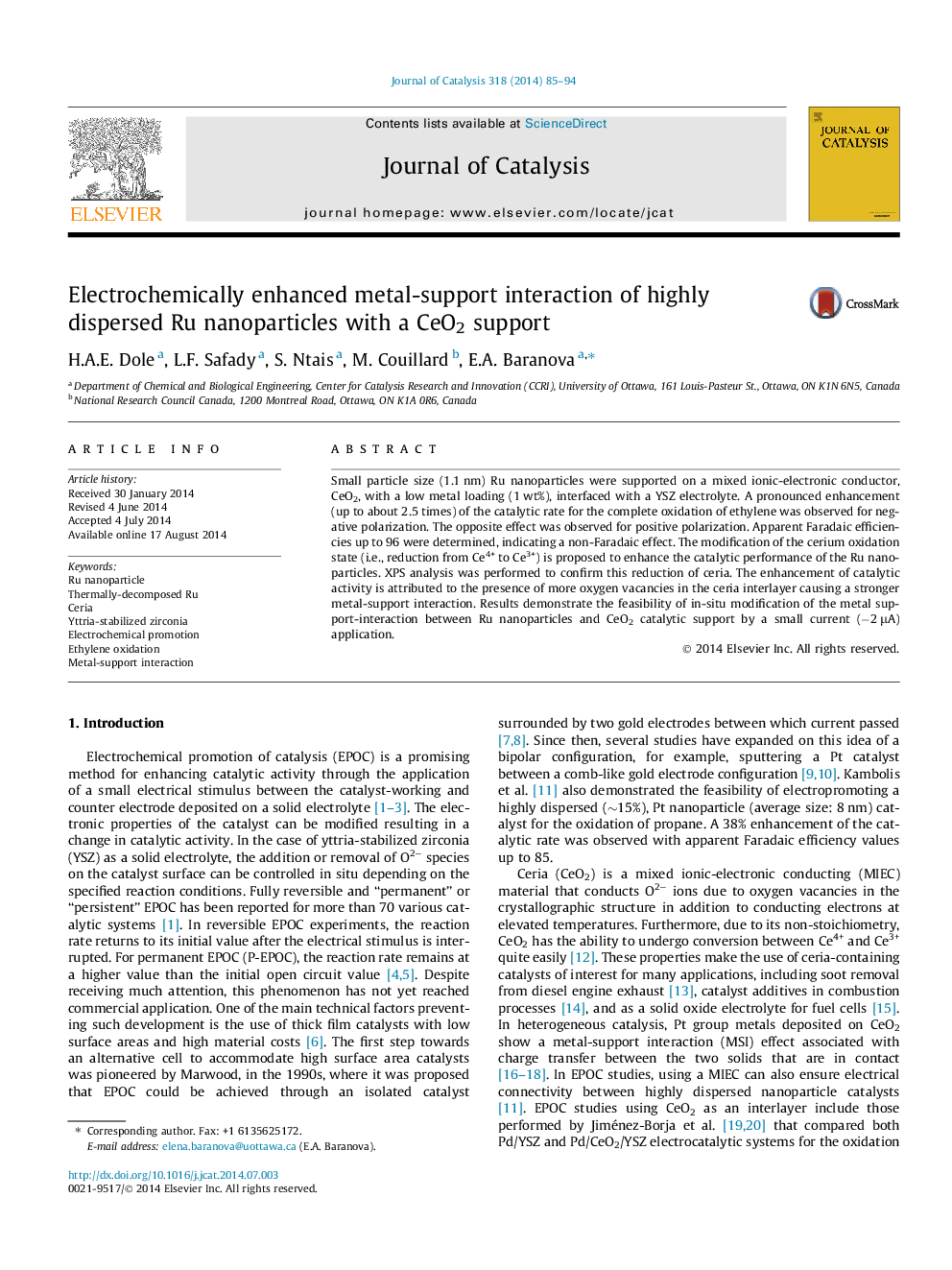| Article ID | Journal | Published Year | Pages | File Type |
|---|---|---|---|---|
| 61064 | Journal of Catalysis | 2014 | 10 Pages |
•Low particle size Ru nanoparticles were deposited on CeO2 interfaced with YSZ.•Both positive and negative polarization showed pronounced effect for C2H4 oxidation.•Electroreduction of Ce4+ to Ce3+, caused stronger interaction with Ru.•Partial reduction of Ce4+ was supported by XPS analysis of fresh and spent catalyst.•Showed feasibility of in-situ alteration of MSI of a highly dispersed Ru catalyst.
Small particle size (1.1 nm) Ru nanoparticles were supported on a mixed ionic-electronic conductor, CeO2, with a low metal loading (1 wt%), interfaced with a YSZ electrolyte. A pronounced enhancement (up to about 2.5 times) of the catalytic rate for the complete oxidation of ethylene was observed for negative polarization. The opposite effect was observed for positive polarization. Apparent Faradaic efficiencies up to 96 were determined, indicating a non-Faradaic effect. The modification of the cerium oxidation state (i.e., reduction from Ce4+ to Ce3+) is proposed to enhance the catalytic performance of the Ru nanoparticles. XPS analysis was performed to confirm this reduction of ceria. The enhancement of catalytic activity is attributed to the presence of more oxygen vacancies in the ceria interlayer causing a stronger metal-support interaction. Results demonstrate the feasibility of in-situ modification of the metal support-interaction between Ru nanoparticles and CeO2 catalytic support by a small current (−2 μA) application.
Graphical abstractFigure optionsDownload full-size imageDownload high-quality image (200 K)Download as PowerPoint slide
